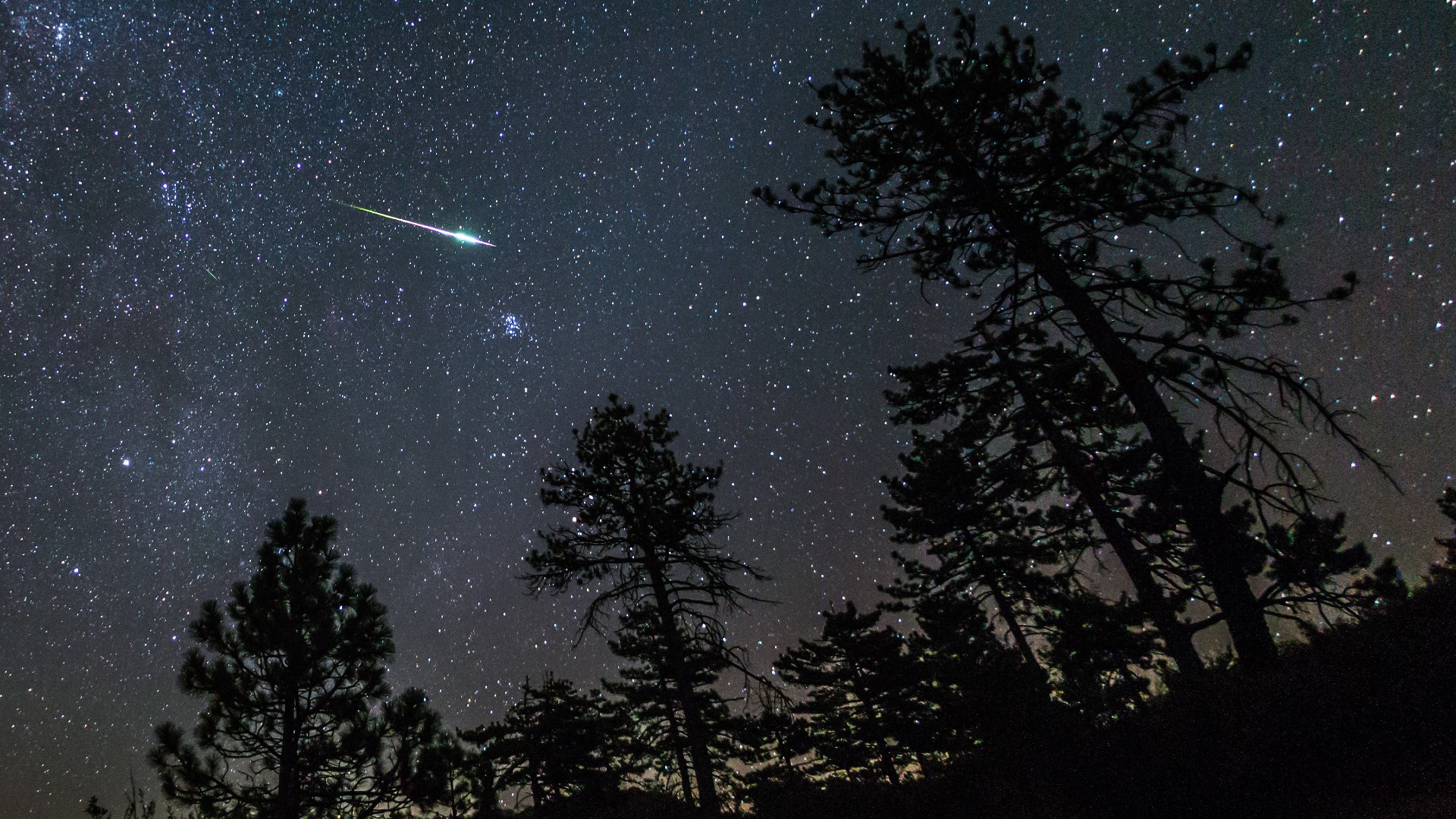How to watch the Eta Aquarid meteor shower — a burst of 'shooting stars' left by Halley's Comet — peak this weekend
An outburst of 'shooting stars' from Halley's Comet could result in a dazzling Eta Aquarid meteor shower on May 5 and 6 — if the full moon doesn't get in the way.

The Eta Aquarid meteor shower will peak this weekend, and it could be a great show for skywatchers who are in the right place at the right time.
The annual display of "shooting stars" (which are actually tiny meteors burning up in Earth's atmosphere) will peak overnight on May 5 and 6, which coincides with the night of May's full Flower Moon. Sadly, that will make it more difficult to see anything other than the brightest meteors.
However, NASA is predicting a "significant outburst," which could produce double the usual number of shooting stars' each hour, according to Space.com.
The Eta Aquarids usually produce only 10 to 30 meteors per hour just before dawn as seen from the Northern Hemisphere, according to the American Meteor Society. They are most often seen as "Earthgrazers," long meteors at the horizon, according to NASA.
The shower tends to appear stronger in the Southern Hemisphere, with a rate of around 60 meteors per hour during the shower's peak. That means there could be as many as 120 shooting stars' per hour during the peak hours of the Eta Aquarids this year.
The shooting stars produced by the Eta Aquarids are particularly swift, hurtling at more than 146,000 mph (235,000 km/h), and they often leave persistent "trains" (incandescent bits of debris in their wakes) that last several seconds to minutes, according to NASA.
Such sightings could be one of the best ways to experience the Eta Aquarids this year, because the full moon will rise at dusk on May 5 and set at dawn on May 6, so it will brighten the sky all night. However, skywatchers in the Middle East, Africa, Asia, Australia and New Zealand will have a distinct advantage because there will be a slight eclipse of the moon for about four hours overnight (with maximum eclipse at 1722 GMT on May 5), so there will briefly be less moonlight to contend with, making meteor viewing a little easier.
Sign up for the Live Science daily newsletter now
Get the world’s most fascinating discoveries delivered straight to your inbox.
Active between April 19 and May 28 each year, the Eta Aquarids are caused by debris left in the inner solar system by Halley's Comet. This year' potential outburst will be caused by particles ejected from the comet in 390 B.C., according to Live Science's sister site Space.com.
Eta Aquarid meteors appear to come from close to the star Eta Aquarii in the constellation Aquarius, but they can show up anywhere in the sky. The constellation Aquarius rises above the horizon a few hours after midnight as seen from the Northern Hemisphere and is highest in the couple of hours before dawn. Using a good telescope or stargazing binoculars will actually make it harder to see shooting stars; all you need are your naked eyes.

Jamie Carter is a freelance journalist and regular Live Science contributor based in Cardiff, U.K. He is the author of A Stargazing Program For Beginners and lectures on astronomy and the natural world. Jamie regularly writes for Space.com, TechRadar.com, Forbes Science, BBC Wildlife magazine and Scientific American, and many others. He edits WhenIsTheNextEclipse.com.









